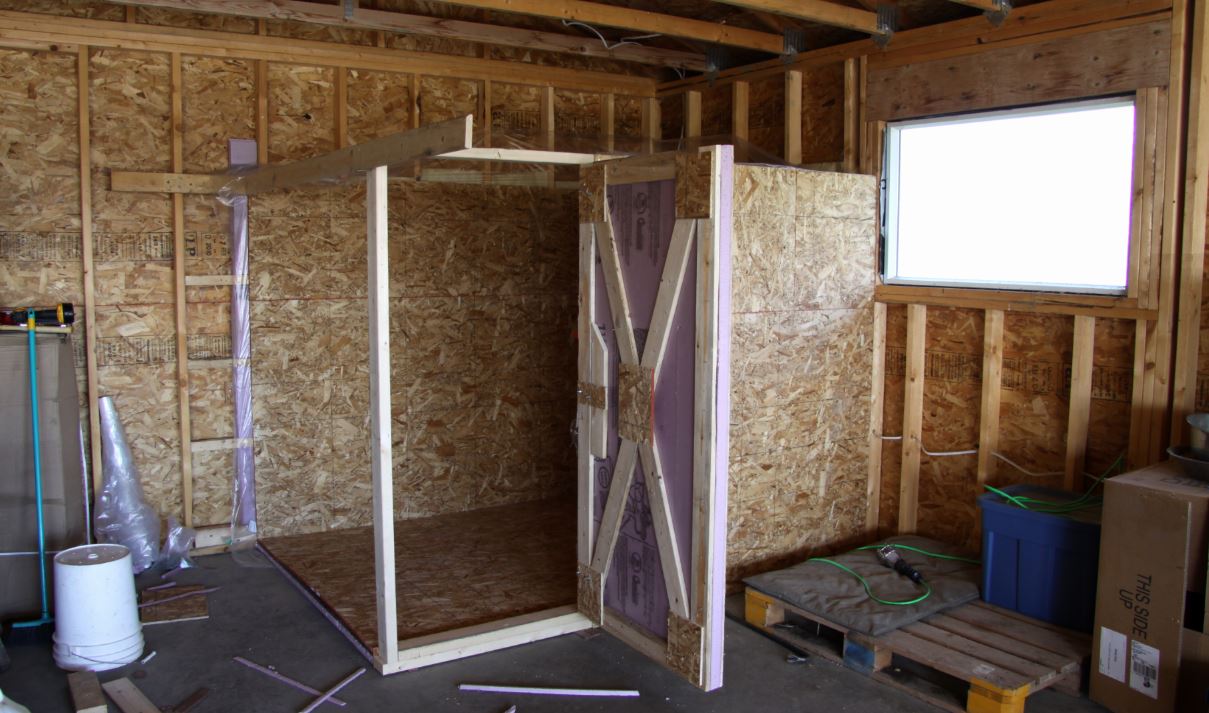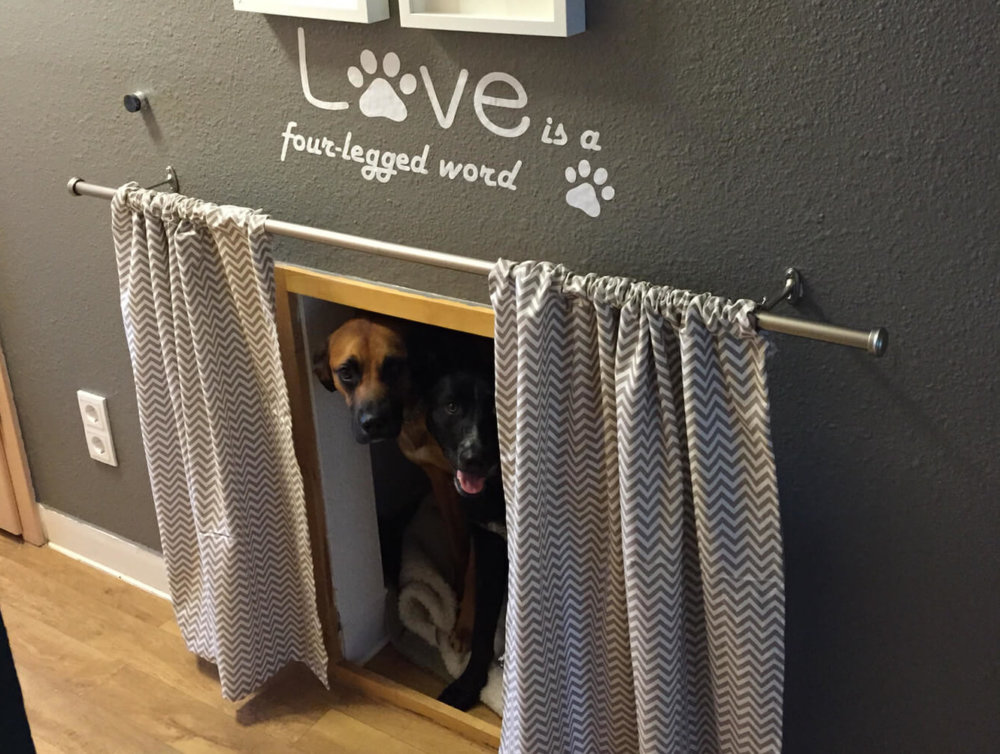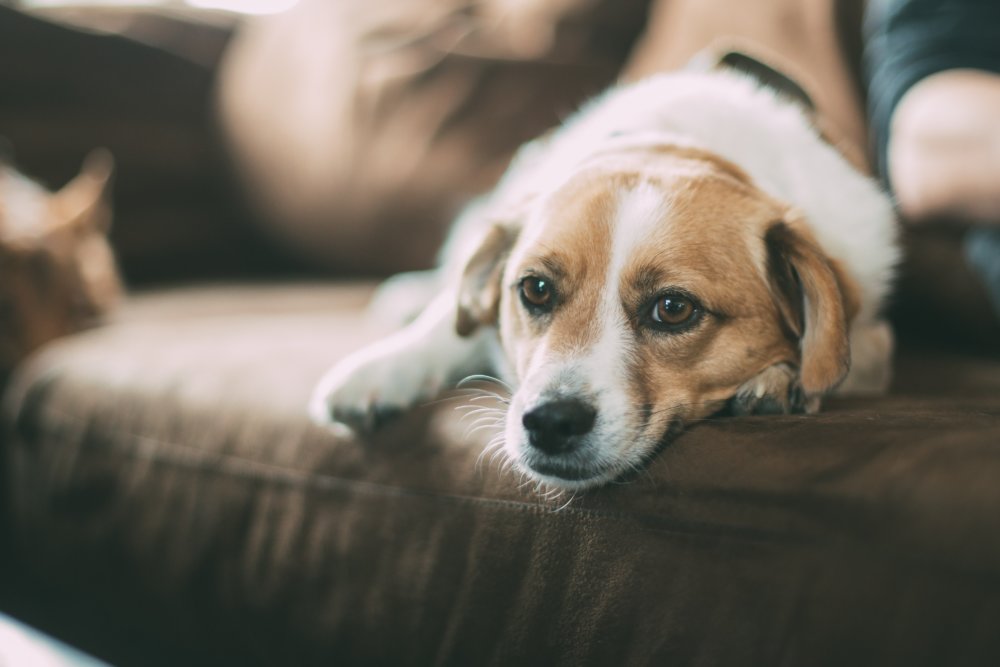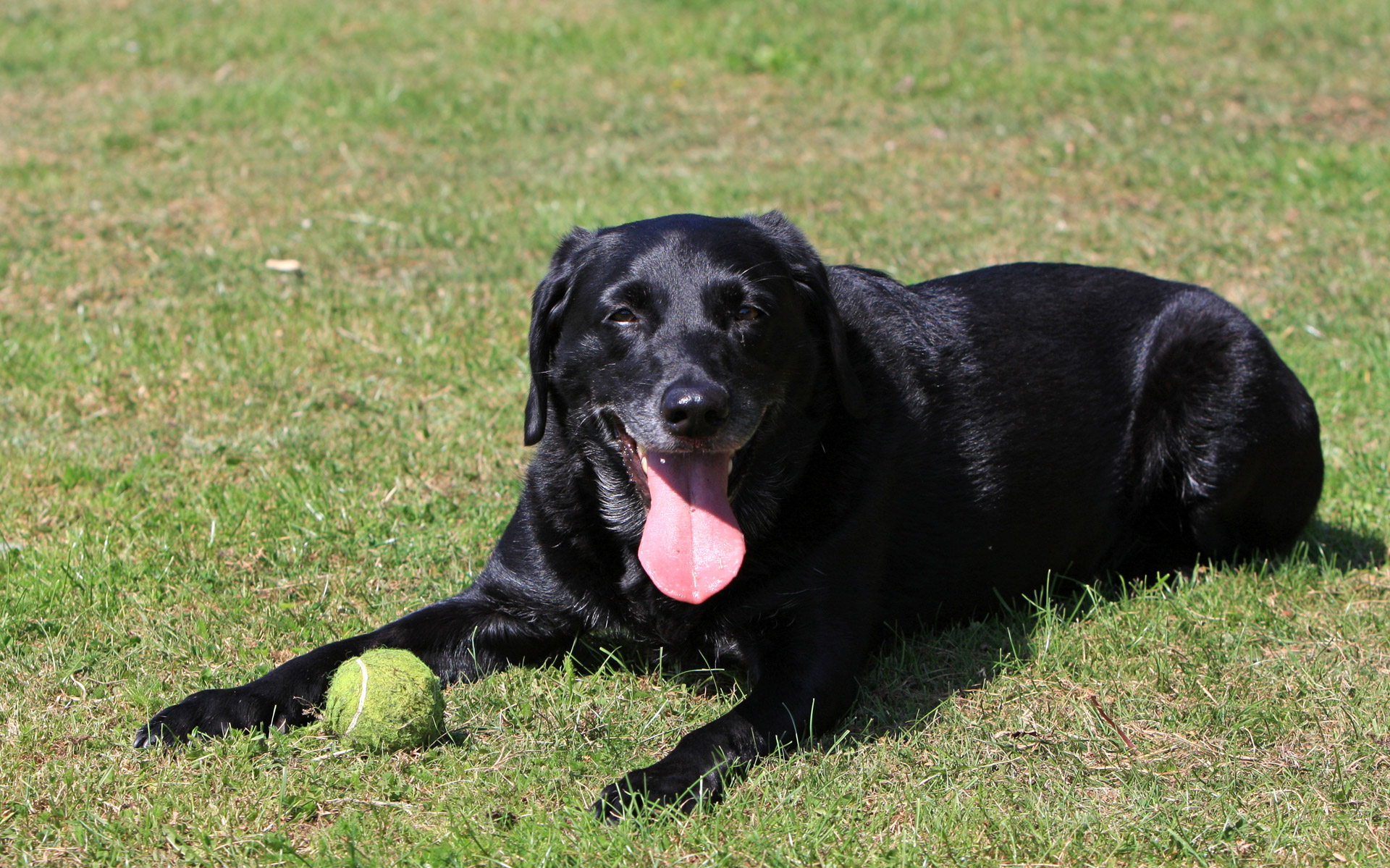Last Updated on July 10, 2024
The crisp air, the crunch of snow underfoot, the sight of my Siberian Husky, Aspen, bounding through a winter wonderland – these are the joys of the colder months. Aspen, with her thick, double coat and boundless energy, thrives in the snow. However, even the most cold-hardy dogs need a warm and sheltered retreat from the elements.
I vividly remember one particularly frigid evening. Aspen, usually a whirlwind of playful energy, was subdued, her nose tucked under her tail, her body shivering despite her thick fur. The sight of her huddled against the biting wind tugged at my heartstrings. That’s when I realized the importance of a well-insulated, weatherproof dog house – a cozy haven where she could escape the chill and rest comfortably.
Choosing the right dog house for winter involves more than just aesthetics. It’s about understanding your dog’s needs, considering the climate, and prioritizing features that provide warmth, protection, and comfort. Join me as we explore the world of winter dog houses, uncovering the key features to look for and highlighting a few top contenders that have earned Aspen’s enthusiastic tail wags.
Beyond the Basic Box: Essential Features for a Winter Dog House
A winter dog house should be more than just a roof over your dog’s head. It should be a sanctuary, a place where they can escape the cold, wind, and snow and rest comfortably. Here are a few key features to consider:
Insulation: Keeping the Cold at Bay
Imagine snuggling into a warm blanket on a chilly night – that’s the feeling a well-insulated dog house should evoke. Look for houses with foam or fiberglass insulation to trap heat and prevent drafts. Aspen, with her love of burrowing, appreciates a thick layer of insulation that creates a cozy, den-like atmosphere.
Size Matters: Finding the Right Fit
A dog house should be spacious enough for your dog to stand up, turn around, and lie down comfortably. However, a winter dog house shouldn’t be too large, as excess space can make it difficult to retain heat. Aspen, despite her size, prefers a snug fit that allows her body heat to warm the space quickly.
Material Matters: Durability and Weather Resistance
A winter dog house should be built to withstand the elements. Choose durable materials like weather-resistant wood, sturdy plastic, or rust-proof metal. Aspen, with her playful nature and occasional chewing tendencies, requires a house that can withstand her enthusiastic explorations.
Ventilation: Fresh Air Without the Chill
Proper ventilation is crucial for any dog house, even in winter. It prevents moisture buildup and ensures a steady flow of fresh air. Look for houses with adjustable vents or strategically placed openings that allow for ventilation without compromising warmth.
Ease of Assembly: From Box to Doggy Den
Nobody wants to spend hours deciphering complicated instructions in the freezing cold. Choose a dog house that’s easy to assemble, with clear instructions and pre-drilled holes.
Winter Dog House Champions: Top Picks for Cozy Canine Comfort
Finding the perfect winter dog house involves considering your dog’s size, your climate, and your budget. Here are a few top contenders that have consistently impressed me and my furry friend, Aspen:
Heated Dog House for Outdoor
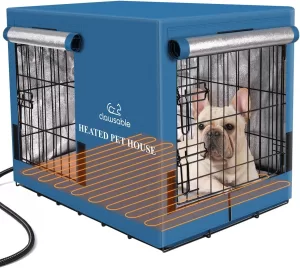 This comprehensive kit provides everything you need to create a warm and comfortable haven for your dog, even in the coldest weather. The heavy-duty construction and insulated cover offer excellent protection from the elements, while the adjustable heating pad ensures a cozy temperature. I appreciate the sliding door, which saves space and prevents accidental knee bumps, and the detachable second door, which allows for flexibility when confinement isn’t necessary. While this kit is ideal for smaller breeds, it might not be suitable for larger dogs like Aspen.
This comprehensive kit provides everything you need to create a warm and comfortable haven for your dog, even in the coldest weather. The heavy-duty construction and insulated cover offer excellent protection from the elements, while the adjustable heating pad ensures a cozy temperature. I appreciate the sliding door, which saves space and prevents accidental knee bumps, and the detachable second door, which allows for flexibility when confinement isn’t necessary. While this kit is ideal for smaller breeds, it might not be suitable for larger dogs like Aspen.
Pro: The comprehensive kit includes all essential components, including a heated pad and insulated cover, making it a convenient and complete solution.
Con: Suited only for smaller dog breeds
Pet Life ‘Hush Puppy’ Electric Heating and Cooling Smart Dog House
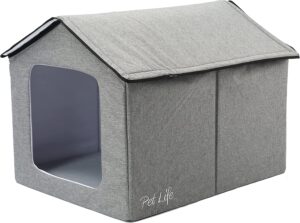 This innovative dog house combines both heating and cooling options, making it a versatile choice for year-round comfort. The built-in fan provides cooling relief during warmer months, while the heated dog mat ensures warmth in the winter. The smart technology system allows for remote temperature control, making it easy to adjust the temperature from the comfort of your home. Aspen loves the cozy interior and the soft, removable cushion. However, the lack of an automatic door means that heat can escape easily, potentially increasing energy costs.
This innovative dog house combines both heating and cooling options, making it a versatile choice for year-round comfort. The built-in fan provides cooling relief during warmer months, while the heated dog mat ensures warmth in the winter. The smart technology system allows for remote temperature control, making it easy to adjust the temperature from the comfort of your home. Aspen loves the cozy interior and the soft, removable cushion. However, the lack of an automatic door means that heat can escape easily, potentially increasing energy costs.
Pros: Able to withstand elements and chewers. Portable. Smart heating technology
Cons: No automatic door
Petmate Indigo Dog House with Microban
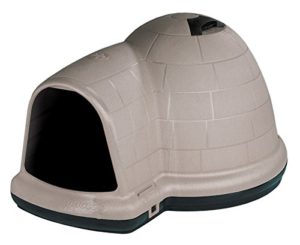 This classic igloo-style dog house is a popular choice for its durability and weather resistance. The heavy-duty structural foam effectively insulates against wind and rain, while the Microban antimicrobial protection prevents the growth of stain and odor-causing bacteria. Aspen appreciates the snug, den-like interior, which naturally retains her body heat. However, this dog house lacks a door, allowing heat to escape easily. Fortunately, Petmate offers a compatible door flap that can be purchased separately. Additionally, a heating pad can be added for extra warmth during extremely cold weather.
This classic igloo-style dog house is a popular choice for its durability and weather resistance. The heavy-duty structural foam effectively insulates against wind and rain, while the Microban antimicrobial protection prevents the growth of stain and odor-causing bacteria. Aspen appreciates the snug, den-like interior, which naturally retains her body heat. However, this dog house lacks a door, allowing heat to escape easily. Fortunately, Petmate offers a compatible door flap that can be purchased separately. Additionally, a heating pad can be added for extra warmth during extremely cold weather.
Pros: Can withstand the weather. It can fight stain and odor-causing bacteria.
Cons: Requires a heating pad during Winter.
Confidence Pet Waterproof Plastic Dog Kennel Outdoor Winter House
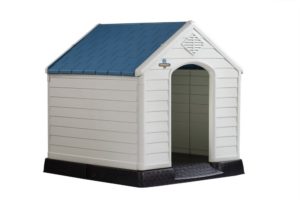 This durable plastic dog house is built to withstand the elements, featuring a weather-resistant design and a raised floor to prevent moisture buildup. The extended roof overhang provides additional protection from rain and snow. Aspen enjoys the spacious interior and the large entrance, which allows for easy access. However, like the Petmate Indigo, this dog house lacks a door, requiring a separate purchase of a compatible door flap. A heating pad can also be added for extra warmth during colder months.
This durable plastic dog house is built to withstand the elements, featuring a weather-resistant design and a raised floor to prevent moisture buildup. The extended roof overhang provides additional protection from rain and snow. Aspen enjoys the spacious interior and the large entrance, which allows for easy access. However, like the Petmate Indigo, this dog house lacks a door, requiring a separate purchase of a compatible door flap. A heating pad can also be added for extra warmth during colder months.
Pros: Extremely durable. Resilient against the weather.
Cons: Requires a heating pad during Winter.
Additional Accessory
When you decide to purchase either one of the Best Dog House For Cold Weather, one of the main concerns is the usage of electricity. While most of the Dog House For Winter can be used without the heating pads, it will be good if you can purchase one for your dog. It will be comfortable for them. However, with the purchase of the heating pad, your electricity usage will increase. This can be mitigated if you buy a thermostatically controlled unit that helps to regulate the temperate by controlling the operation of the heating pads. One such thermostatically controlled outlet is the Farm Innovators Model TC-3 Cold Weather Thermo Cube Thermostatically Controlled Outlet.
Farm Innovators Model TC-3 Cold Weather Thermo Cube Thermostatically Controlled Outlet
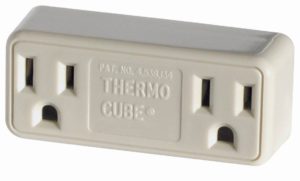
This Farm Innovators Model TC-3 Cold Weather Thermo Cube Thermostatically Controlled Outlet is highly recommended by users on Amazon. What is does is pretty simple. When the temperature is at 35°F, the outlet will be switched on, and the current will pass through. If your heating pad is connected to it, then the heating pad will be turned out. At 45°F, it will automatically turn off the heating pad. This action allows you to conserve electricity!
Beyond the House: Winterizing Your Dog’s World
Choosing the right dog house is just one step towards ensuring your furry friend’s comfort and safety during the winter months. Here are a few additional tips to keep in mind:
Location, Location, Location: Place your dog house in a sheltered spot, protected from wind, rain, and snow. Consider elevating the house slightly to prevent flooding and improve insulation. Aspen’s dog house is nestled against a south-facing wall, providing protection from the prevailing winds and maximizing sun exposure.
Bedding Bliss: Provide your dog with ample bedding, such as straw, cedar shavings, or a thick dog bed, to create a warm and cozy nest. Aspen loves burrowing into a pile of soft blankets, creating a warm and inviting retreat.
Doorway Defense: Install a door flap or curtain over the entrance to prevent drafts and retain heat. Aspen’s dog house features a heavy-duty vinyl flap that effectively blocks wind and snow while allowing her easy access.
Water Works: Ensure your dog has access to fresh, unfrozen water at all times. Consider using a heated water bowl to prevent freezing.
Monitor for Cold Stress: Watch for signs of cold stress in your dog, such as shivering, lethargy, or loss of appetite. If you notice any of these signs, bring your dog indoors immediately and consult your veterinarian.
Warmth, Comfort, and Canine Companionship
A winter dog house is more than just a shelter; it’s a symbol of your love and care for your furry friend. By choosing the right house, prioritizing warmth and comfort, and taking extra precautions during the colder months, you can ensure that your dog enjoys a safe and happy winter season. Now, if you’ll excuse me, Aspen and I have a snowball fight to win.
 Dog N Treats All dogs deserve to be pampered
Dog N Treats All dogs deserve to be pampered
